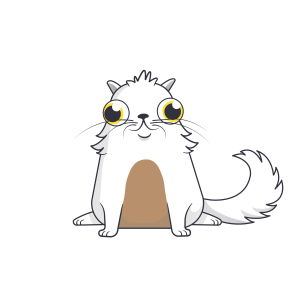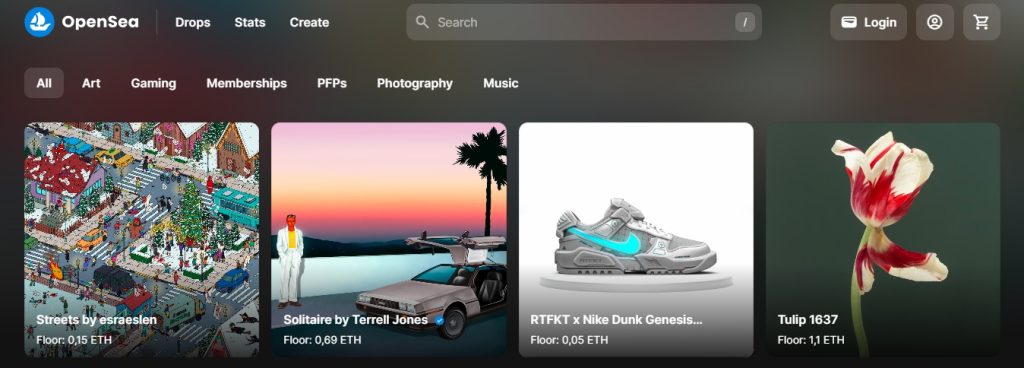Wondering what is NFT? It allows you to own something unique, like art or music. This concept is transforming how we think about ownership and value in the digital space.
What is NFT?
NFTs (non-fungible tokens) are unique digital assets. Unlike regular digital stuff that can be copied exactly (like photos or music files), every NFT is unique. Like a piece of digital art with digital certificates about the owner.
NFTs use blockchain technology, the same tech behind cryptocurrencies like Bitcoin. But unlike Bitcoin, where they are changeable, each NFT is different and can’t be swapped like-for-like. This is why they’re called ‘non-fungible’.
They can represent anything unique that can be digital. This includes videos, music, and even things in video games like skins or virtual real estate. Some people collect NFTs for fun, others see them as an investment, hoping they’ll go up in value over time.
A Little History
New NFT projects started popping up around 2014. This was when some tech people began using blockchain for something new. They wanted to use it to show who owns different digital items.
One of the earliest known NFTs was called “Quantum” and connects to Jennifer and Kevin McCoy digital artists. This artwork showcased how NFTs that represent both the digital or physical world can exist on a blockchain. This NFT sale showed the potential of NFT digital artwork.
Then the big boom arrived in 2017 with CryptoKitties. These are cartoon cats, and showed the world what NFTs could do. People could collect, buy, and sell these cats, and it was all recorded on the blockchain.

A big part of NFTs is something called the ERC-721 standard. It defines the rules for making NFTs on the Ethereum blockchain. This standard is like a recipe for creating NFTs, making sure each one is special and different.
How Does NFTs Work?
NFTs are pretty straightforward once you get the hang of it.
First up is ‘minting’. This is when a digital file, like an artwork or a digital collectible, is turned into an NFT drop. When you mint NFTs, the item gets a unique digital signature, making it special on the blockchain.
The blockchain acts as a super-secure, digital ledger and makes sure that every NFT is recorded on a blockchain. It’s like a big book that keeps records of who owns what NFT. This ledger distributed across nodes (special computers) all over the world to make NFTs secure. Actually these nodes called as validators and they are responsible for checking and confirming every activity on the blockchain whatever if it’s creating or trading of an NFT.
Most of the time the ownership of an item is public on the ledger (however kinda anonym as just the wallet address is recognizable). So, NFTs are unique and secure by the blockchain. They’re minted, validated, and transferred in a way that makes sure everyone knows who owns what, making them a reliable way to own digital treasures.
Non-Fungible Token vs Standard Crypto Coins
Imagine you have a $10 bill. You then swap it for someone’s $10 bill. Basically nothing happened except you changed the material, but they both hold the same value. This is ‘fungibility’, where each item (or coin) is interchangeable based on its value. Most cryptocurrencies, like Bitcoin or Ethereum, work this way. One Bitcoin is always equal to another Bitcoin.
Now, think of NFTs like a rare, autographed baseball card. If you trade it for a different card, you’ll get something completely different. This uniqueness is what ‘non-fungible’ means. So each NFT has its own identity and value, based on factors like rarity, its creator and what it represents.
While standard crypto coins are about trading and storing value, NFTs are about owning something unique and sometimes, something with personal or artistic value.
Examples of NFTs – What NFTs Use For
NFTs have found their way into all sorts of areas. Let’s see what NFTs are used for:
- Digital Art: This is the most famous use of NFTs. Digital artists create artwork and sell it as NFTs. This has revolutionized how digital art is valued and collected. The most expensive NFT ever sold is a piece by the artist Beeple, titled “Everydays: The First 5000 Days”, which sold for $69 million. This nft sale shattered records and brought attention to the growing world of NFTs.
- Sports: NFTs are becoming big in sports too. They’re used to sell digital collectibles like videos of iconic moments, digital cards of players, or even special experiences for fans.
- Trading Cards: Remember collecting cards? Now, there’s a digital version. These digital trading cards are bought and sold as NFTs, with some being very rare and valuable.
- Utility: Some NFTs offer more than just being collectibles. They can provide special access to events, discounts, or other benefits. NFTs can also be used like having a membership card, but in digital form.
- Virtual Art: Beyond just pictures, virtual art includes animations, interactive installations, and more, all sold as NFTs.
- Collectibles: Digital collectibles can be anything from virtual pets to unique digital objects. They’re bought, sold, and sometimes even ‘bred’ digitally.
- Music: Musicians are also using NFTs to sell their music, album art, and unique experiences related to their work. This is a new way for fans to own a piece of their favorite artist’s creations.
- Virtual Real Estate: In virtual worlds, land and buildings are sold as NFTs. This lets people own a piece of the digital world, which can be used for various purposes.
NFTs have opened up a whole new world of possibilities, changing how we view ownership and value in the digital space.
Most Popular NFT marketplace
This section we introduce you the largest NFT marketplace – Opensea.

Often compared with Amazon, but in the NFT universe. OpenSea is a giant, where you can browse, buy and sell a huge range of NFTs. From digital art and music to virtual real estate and collectibles, It has something for every type of NFT fan. Its user friendly user-interface makes this marketplace a friendly place both for NFT beginners and experts. The marketplace lives by its diversity and hosts a wide range of digital assets, making it a hotspot for NFT trading.




